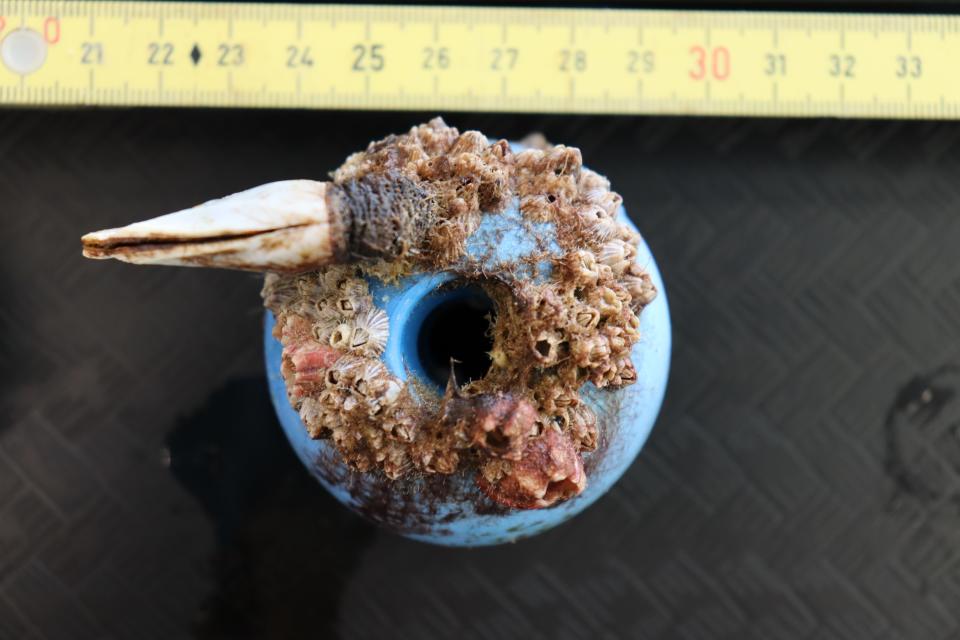Surprise find: Marine animals are thriving in the Great Pacific Garbage Patch
There's life amid the garbage.
Marine animals that usually live only in coastal areas of the western Pacific Ocean have been found living and reproducing on plastic debris on the high seas – in the Great Pacific Garbage Patch, according to a study published Monday.
The study, among the first to document the creation of an artificial floating habitat for coastal marine life in the open ocean, was published in the peer-reviewed British journal Nature Ecology and Evolution.
The research was led by Linsey Haram, a scientist with the Smithsonian Environmental Research Center in Edgewater, Maryland, which said "these discoveries raise many challenging questions about the future of our oceans in the context of the global plastic pollution crisis."
A new community in the ocean
Scientists collected 105 items of floating plastic debris in the garbage patch and found evidence of living coastal species on 70.5% of the debris analyzed. The debris was collected between November 2018 and January 2019.
They identified 484 separate marine organisms on the debris, of which 80% were species usually found in coastal habitats.
"It appears that coastal species persist now in the open ocean as a substantial component of a 'neopelagic' community sustained by the vast and expanding sea of plastic debris," the authors write in the study. (A "neopelagic" community is a new type of ecological community in the ocean.)
Ocean cleanup: They pulled 63,000 pounds of trash from the Great Pacific Garbage Patch, but that's just the start

What is the Great Pacific Garbage Patch?
The Great Pacific Garbage Patch, a collection of floating trash, most of it plastic, halfway between Hawaii and California, covers more than 600,000 square miles, studies have shown. That's twice the size of Texas.
Though there are at least five garbage patches in the world, the Great Pacific Garbage Patch, also called the North Pacific Subtropical Gyre, holds the most plastic. This patch contains at least 79,000 metric tons of trash, including fishing nets, bottles and tiny plastic fragments called microplastics, according to a 2018 study published in Nature.
The trash comes from around the Pacific Rim, including nations in Asia and North and South America. The patch was first discovered in the early 1990s.
The patch is not a solid mass of plastic. It consists of about 1.8 trillion pieces and weighs 88,000 tons – the equivalent of 500 jumbo jets.
Garbage patch: World's largest collection of ocean garbage is twice the size of Texas
What critters were found in the garbage?
Animals discovered in the patch include crustaceans, sea anemones, mollusks and worms, the authors said.
Species already known to live in the open ocean were thriving on the plastic garbage, too, lead author Haram told NPR, but "we also saw this very prominent and diverse group of coastal species that honestly we just wouldn't have expected to find."
Rather than the garbage patch being inhospitable to coastal-dwelling species, it seems that coastal critters are living long enough to reproduce, ScienceAlert reported.
Indeed, the study authors found evidence of sexual reproduction among both coastal and open-ocean species.
The study also found that the diversity of all organisms was highest on rope and that fishing nets harbored the highest diversity of coastal species.
A thriving new community: Scientists call it a 'floating plastic habitat.'
This article originally appeared on USA TODAY: Great Pacific Garbage Patch: Coastal marine animals are thriving there

